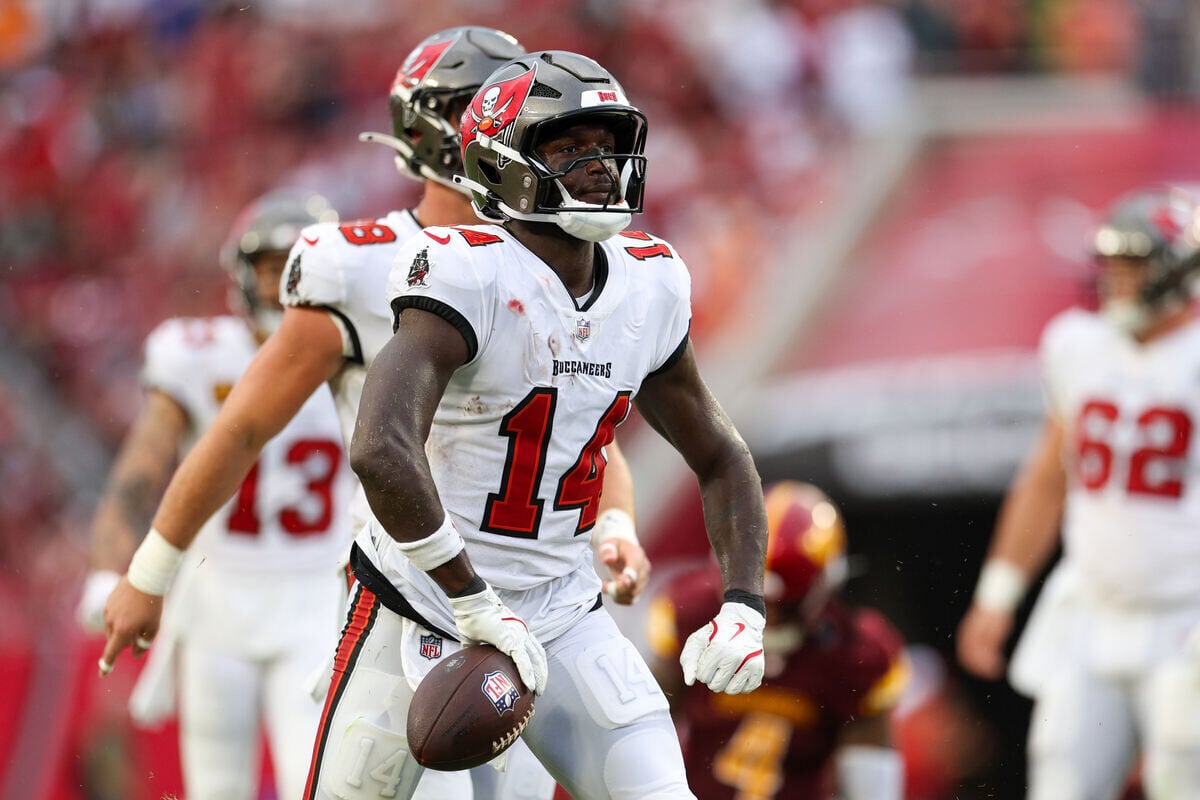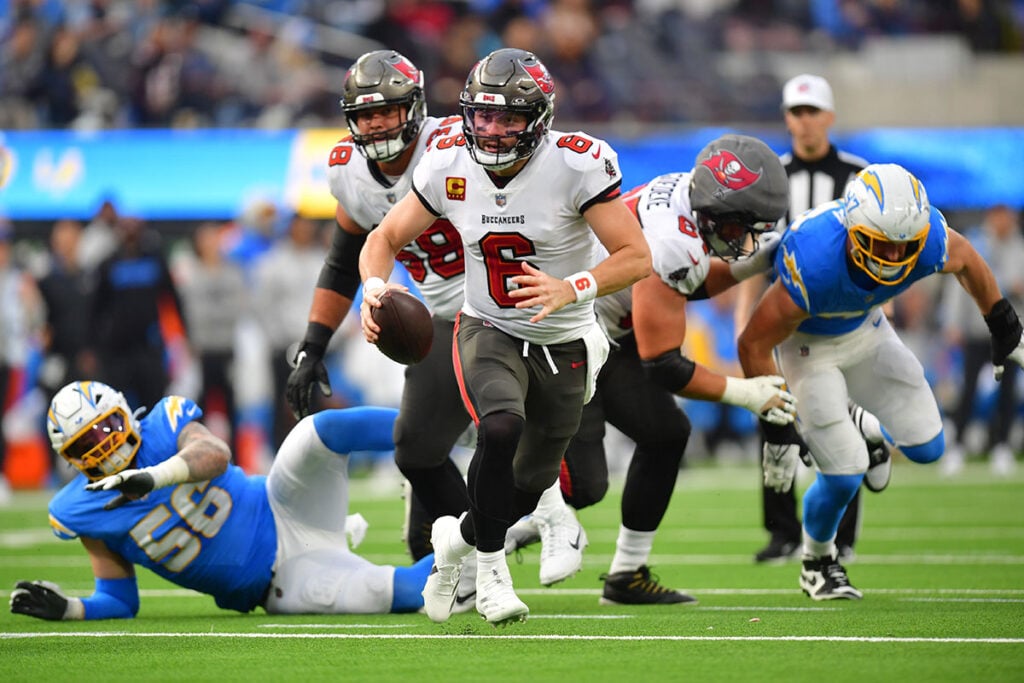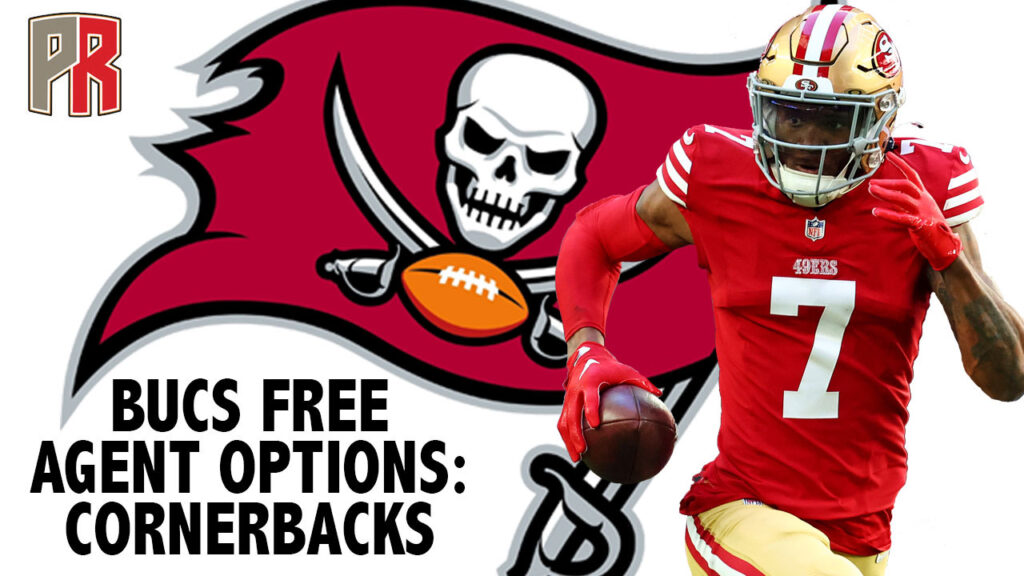The Bucs have a big decision to make, and the window to make it just opened. All teams are now on the clock to use their franchise tag designation for any pending free agents they want to prevent from getting to the open market. It’s an expensive option. Depending on the type of tag it costs most teams the equivalent of the top five or top 10 salaries at the position. And there is only one player who the Bucs would even consider using the tag on. Chris Godwin.
The Franchise Tag Explained

Bucs WR Chris Godwin – Photo by: Cliff Welch/PR
The franchise tag is a mechanism teams can use to keep a pending free agent under contract for a single year at a near top of the market salary. Here are the projected salaries for each position for 2025 via Over The Cap.
There are two types of tags. The franchise tag prevents the player from negotiating with any other team. He is locked into the one-year contract at the tag price. The transition tag allows the player to still negotiate with and even agree to a contract with another team. But it also allows the tagging team to match the offer and keep the player at the agreed upon contract. If the player makes no agreement with another team they will get the one-year deal at the transition tag rate.
Chris Godwin’s History With The Franchise Tag
The Bucs used the franchise tag multiple times during their Bruce Arians/Tom Brady Super Bowl window to help keep premier talent under contract. The first time was in 2020 when they used the tag on Shaq Barrett following his electric 19-sack season in 2019. They used it again 2021 to keep Godwin under contract after his rookie contract was up. The cost of that tag was a modest $15,983,000. Tampa Bay used the tag a second time on Godwin the following year as a stopgap to the eventual three-year, $60 million extension the two sides agreed upon. It is that deal Godwin has just completed this past year.
And therein lies the rub. The franchise tag price for Godwin is not the same as the generic wide receiver tag number listed above. For players who have previously been tagged there is a premium they are owed on future tags. A second tag requires a 20% raise on their previous year’s salary. That was the price the Bucs had to pay in 2022 when they placed the second tag on Godwin. Had the two sides not agreed to the extension they would have paid him $19,179,600.

Bucs WR Chris Godwin – Photo by: Cliff Welch P/R
But a third tag? That comes with a 44% raise on the player’s previous year’s salary cap hit or the tag number for the highest paid position in the NFL. Godwin earned $20 million last year. Godwin’s cap hit in 2024 was $27,534,000. A 44% increase would put his 2025 tag number at $39,648,960. And the projected tag number for quarterback is $41,325,000. That would make Godwin the highest paid receiver in the NFL by a country mile. The current highest-paid receiver is Justin Jefferson who is making $35,000,000 per year. This would be a 18% increase over Jeffersons APY. That’s quarterback money. The Bucs are only paying Baker Mayfield $33,333,333 per season.
Godwin is a fantastic receiver. He was having a tremendous season before a dislocated ankle ended his 2025 campaign halfway through the season. Given his pace prior to the injury, he had a shot at becoming a $30 million receiver. But the injury has dampened those prospects entirely. Godwin’s open market value is sitting just around $20 million. My own projections have him at $19 million per year. Pro Football Focus has him at $20 million.
Those valuations are half the cost of the tag as it relates to Godwin’s unique situation. So, no. The Bucs will not be using the franchise tag on him. Godwin’s last contract has already tolled, so Tampa Bay will absorb $18,852,000 in dead money from his most recent deal. The two sides have both expressed interest in a new deal, and that is still what we at Pewter Report expect to happen. But it will not be on a tag.
Josh Queipo joined the Pewter Report team in 2022, specializing in salary cap analysis and film study. In addition to his official role with the website and podcast, he has an unofficial role as the Pewter Report team’s beaming light of positivity and jokes. A staunch proponent of the forward pass, he is a father to two amazing children and loves sushi, brisket, steak and bacon, though the order changes depending on the day. He graduated from the University of South Florida in 2008 with a degree in finance.




